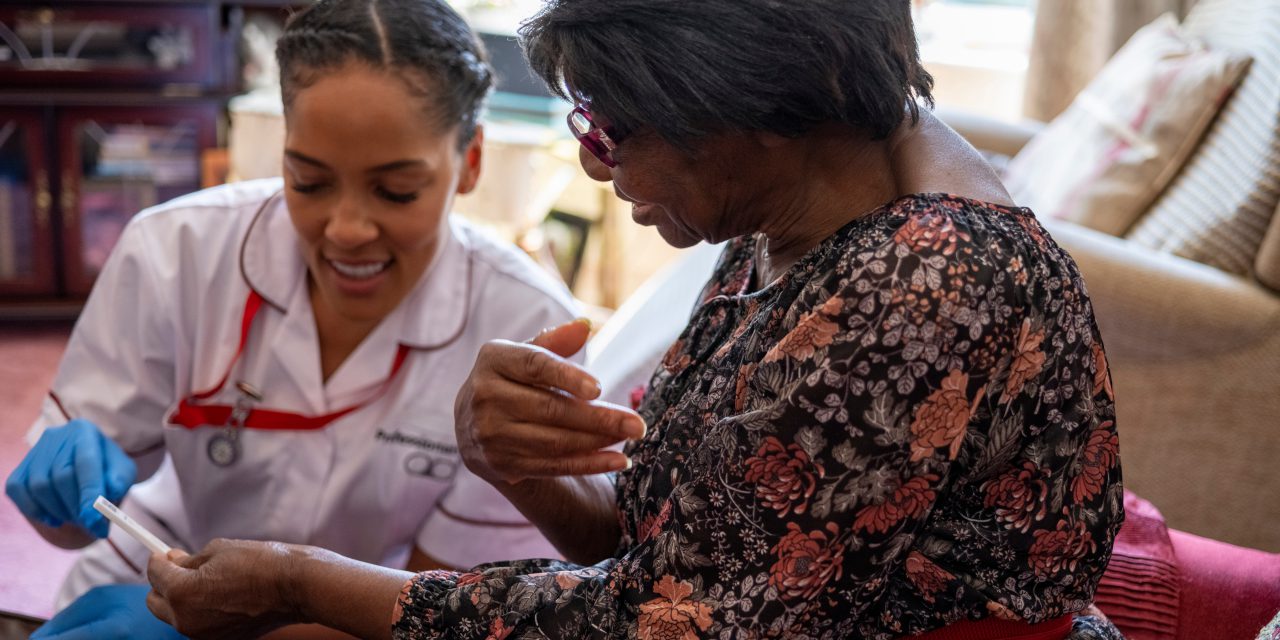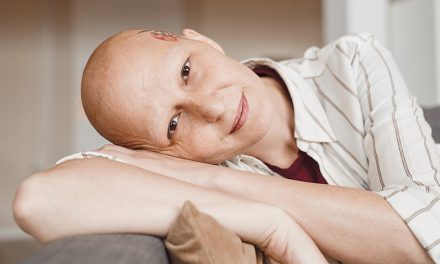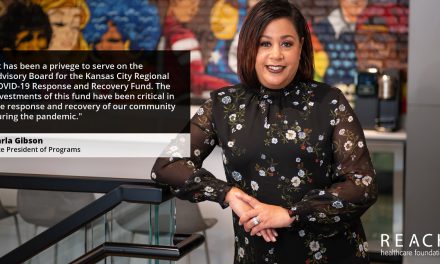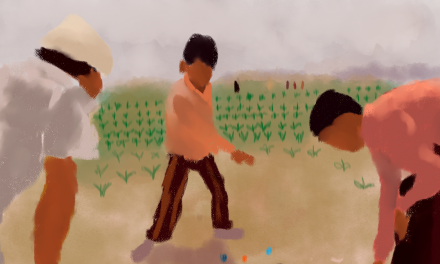One of many community health resources offered by the Missouri Rural Health Association, the Customized Caregiver Training & Relief Program (CCTRP) helps families or other caregivers care for loved ones with Alzheimer’s disease and related dementia. The program’s ultimate goal is to support and educate caregivers so that the person with Alzheimer’s or dementia can stay in the home, and not be moved to a memory care facility, for as long as possible.
I sat down with Rusty Douglas, the community health worker involved in the program, to learn more about her and the CCTRP.
Q: Could you walk me through your role as a community health worker in the CCTRP program?
A: Basically, I’ll be going in and talking with the caregivers, assessing their needs, but also identifying safety hazards in the home and helping them implement precautions like stop signs on doors or handles on showers, moving rugs so they don’t trip and fall, that sort of thing. I’ll be going over what their needs are with the caregivers and helping them to take time for themselves as well as taking care of their loved one. It’s just really being a friend, a mentor, a source of information, all those things. The in-home assessment I do is a big part of it, but the other stuff is going to be individualized to the patient. It could be anything.
Q: What should I expect if I’m having an in-home assessment?
A: I come in and I get to know their situation. There’s questions that I will go through with them to find out the state their loved one is in, what needs are in the household, and what issues they’re facing. I meet them, see what is going on, identify things in the home that are potential hazards to the patient, and help them fix it or make it easier on them. Our ultimate goal is to keep that person in their home as long as possible.
Q: Where would we go from there?
A: I help them implement some of those safety things. It could be helping them install door alarms, whatever they need, just getting it in place. There’s a three-month follow-up where I go over a care plan with them for their loved one. In three months I check in on that, and then in six months I check in again. It’s a year-long program. If they need me, they’ll have my cellphone. They can call me and I can see what I can do to help. It just gives them a source. You can feel so alone when you’re a caregiver that you feel like there’s nobody to help, so it’s nice having that link.
Q: Is there anything within the CCTRP that is often underutilized?
A: The program in general. People are unaware of it. They often don’t know about programs that are free. It’s too good to be true, that kind of thing. They’re also leery of it. There’s the aspect of, “This person is coming in my home.” Being personable and putting yourself in their shoes, on their level, is important.
Q: What do you see as the CCTRP’s biggest success?
A: Keeping people in their home. Letting them live as normal a life as possible. Allowing them normalcy, providing that for them.
Q: Where would you like to see it go from here?
A: I would love to see it grow so that there was a care coordinator, community health worker, in every region of the state of Missouri. Closer access, so people didn’t have to come from two hours away.
Q: I imagine the distance can put some unnecessary burdens on people who are already dealing with a lot on their plate.
A: Yes, and I think it would be amazing to see the resource grow because there’s a lot of patients out there. We just need to get to them.
Q: If I’m a family member who may be taking on the role of a caregiver soon, what are some things I should know?
A: The number one thing is: You are not alone. That’s the most important thing I can stress. There are people out there, there are support groups, there’s us. That’s the number one thing to think: I’m not alone, and what are the resources that can help me? What are my links to things that are going to make this situation easier for me and my loved one?
Q: What are some common changes that need to be made around the house?
A: Rugs and bathtub-related safety are the top, and decluttering. Keep your loved one active and provide activities that are something easy they can get to. Keep it simple. Too much gets overwhelming.
Q: Could you elaborate more about the activities to keep people active?
A: Providing a family photo album for them to look at to trigger memories with them. Pictures — one or two, not overwhelming. Magazines or books that have pictures in them rather than words, because with Alzheimer’s and dementia, they struggle to retain what they’ve just read. Maybe if they can fold laundry and that was something that they’ve done before, you can provide a little basket of laundry for them to fold. Just something to help them stay active and keep their mind sharp as they can be.
Q: Tell me about how you became a community health worker.
A: It’s just where my heart is at. By chance I ran into a lady that worked at an FQHC (federally-qualified health center), so I came into an FQHC where I truly learned to love the patients. You really go out of your way when you work at an FQHC to do everything you can for the patient. I fell in love with that, the ability to take it that extra mile. When you work somewhere privately owned, you don’t really get to delve into people’s lives. At an FQHC, you’re like, “What can I do to help you find these resources? What can I do to help you eat? What can I do to get you your medicine?” I just love that. That’s always been who I am. I like to learn about people and I like to know what I can do to help.
Q: What other roles do you play as a community health worker?
A: Jack of all trades is what I consider myself. If I hear of someone having a need, if there’s something I know of that can help them, I’m the person that’s going to tell them, “Hey, did you know?” That’s what you do. If you hear of a struggle somebody’s having and you know a way they can fix it, give them that resource. You’re a friend, you’re a mentor, you’re a teacher, you’re a caregiver yourself. Whatever they need at that time, you help them with that. Sometimes you’re an ear to listen to their day, especially with elderly people. They just need that ear.
Q: Is there anything that stands out to you as memorable or especially impactful that you’re proud of?
A: So many different situations. There was a patient that lived in a barn with her husband. Her husband needed oxygen, and their road was so bad that the people wouldn’t come to them to give it to them. So through a series of phone calls, I was able to get people to meet them in a parking lot and get the oxygen to them. That was so wonderful because it provided them something they desperately needed. With this particular family, there were also vouchers that we were able to help them with and many different things. That’s always very rewarding. It fills you up, because you know their life is easier now. Also, helping somebody get Medicaid. I’ve done that multiple times. Maybe they were too confused by it, but you walk them through the application, and then, bam, now they’re able to get medical care that they didn’t get before. It really makes their life better.
Q: Is there a way that we can encourage empathy for people with dementia and Alzheimer’s?
A: Education is key. Often, they don’t know the struggles. They may not have been through it. They don’t stop and think, “What if I lost my memory? What if, suddenly, I can’t function like I functioned yesterday?” If you hear somebody making some not-educated remarks about it, you can educate them. Gently say, “Hey, this really hits people. It takes a lot out of them. It’s not as simple as just ‘my old grandma that’s forgetting stuff.’ There’s more pain and heartache to it than that.” Also, preparing families that it’s going to change as they go on their journey, but also letting them know that even as the journey changes, you can find joy.
Q: Do you find that people often seek care too late because of the expectation that memory loss is part of growing older, not something that should be treated?
A: Yes, absolutely. I hear all the time, and I’ve even said it. “I’m gettin’ old!” But at a point you start to recognize, okay, this seems excessive. People do postpone getting care. I think the first thing is, “What am I going to do? What’s going to happen to me?” They’re afraid of getting the diagnosis, even though early diagnosis is better than getting it later down the road because they can be sound of mind and prepared for that journey. That’s why it’s especially important to work with your doctor if you’re forgetting things. Mention that at your yearly checkup so they can keep an eye on it. They’ll recognize the signs if it could be related to a dementia-type illness.
Q: Are there any other thoughts you’d like to share?
A: I love my job. I’m here to help. Alzheimer’s can be a scary thing to be diagnosed with, so to be able to help, even a little bit, to make somebody’s journey easier is so rewarding and fulfilling. It’s something I’ve always enjoyed and wanted to do for people.
To learn more about the CCTRP, visit https://mrhassociation.org/caregivers/








